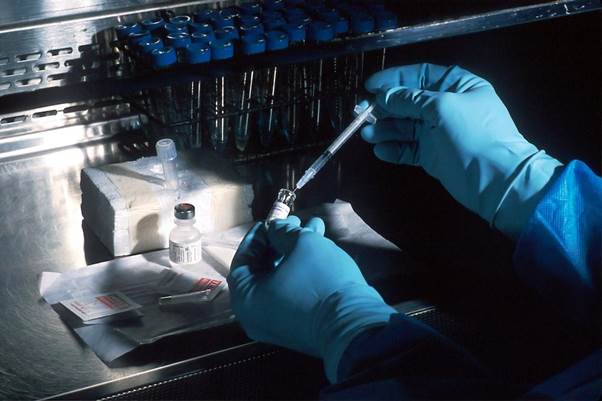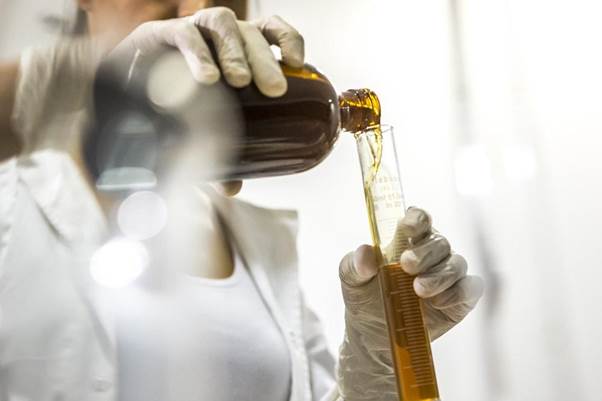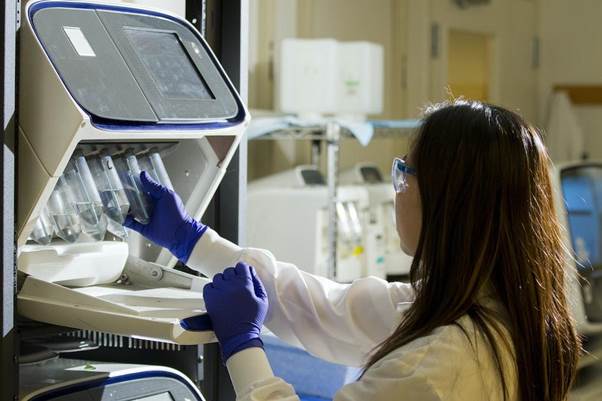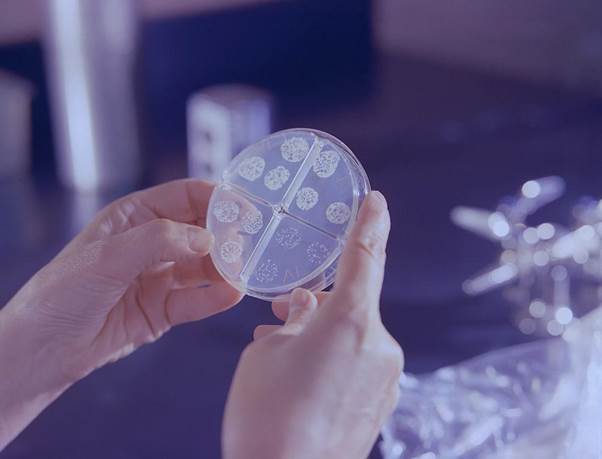Modern Applications of Gene Synthesis
Jan 13th 2023
Technology for gene synthesis and assembly has advanced quickly in recent years. Our ability to synthesize genes has increased dramatically since the 1960s, going from less than 100bp to more than 1,000,000bp. Metabolism engineering, the design of genetic networks, and vaccine development are all significantly impacted by gene synthesis techniques and applications. However, there are still several shortcomings and inconsistencies with current gene synthesis techniques, including low yield, high error rates, and a lack of scalability in project size and gene size.
What is Gene Synthesis?

The main genetic component that transmits genetic information or heritable traits from one parent to the next is called a gene. It contains nucleotides, which form a DNA molecule when they come together. Genes are naturally found in the chromosomes found in human cells as nucleic acid sequences. However, synthetic nucleic acid sequences known as base pairs are produced during gene synthesis.
To improve the traits or properties of the target gene for use as probes in various life sciences research projects, researchers can use gene synthesis services to enhance or modify genetic components.
Mutagenesis—inserting a mutagen—into a genetic code—was a traditional method of synthesizing genes. On the other hand, Mutagenesis could only change a single base pair within an entire gene sequence, making it unsuitable for tasks like custom DNA synthesis or custom gene synthesis.
Traditional cloning using restriction enzymes was the second method of gene synthesis. The protein produced by bacteria, a restriction enzyme, cleaves or cuts DNA sequences along predetermined sections to produce DNA fragments resembling genes.
Significantly, traditional cloning has many benefits, such as low labor intensity and various expression systems, like the E. coli protein expression system that DNA synthesis businesses use to provide Protein Expression Services and purification.
However, the traditional custom gene synthesis method had drawbacks, such as potential sequence restrictions from restriction sites. Other drawbacks were: unwanted recombination sequences in protein production services and a vector structure that might have an impact on downstream services like recombinant protein productionand antibody sequencing services.
The first in vitro functional synthetic gene was created in 1972 by Indian chemist Gobind Khorana, marking the beginning of gene synthesis in human history. He assembled a gene from DNA fragments by combining several enzymes.
In 2023, advances in biotechnology will make it possible to create novel sequences that do not occur naturally, non-natural gene sequences that are challenging to extract, and an entire synthetic genome from gene synthesis.
Most gene synthesis businesses provide custom DNA synthesis services and can create synthetic genes with 150–200 kilobase pairs (kb) using methods like the solid-phase peptide synthesis protocol. Additionally, some gene synthesis businesses create longer DNA strands with thousands of base pairs using ligation techniques. Therefore, DNA molecules' genes play a crucial role in peptide synthesis and protein production processes like antibody production in addition to passing on genetic traits to offspring.
As a result, gene synthesis is a standard offering from gene synthesis businesses. But these businesses expand on gene synthesis services by providing line services. These include peptide synthesis, tailored protein synthesis, tailored antibody service, tailored antibody expression, tailored protein expression, tailored antibody sequencing, and the creation of ELISA kits.
Significantly, the cost of custom gene synthesis varies depending on the length and complexity of the peptide, the expression systems, and the degree of customization.
Gene Synthesis Methods

You cannot substitute gene synthesis techniques for one another; each fills a specific project-related need. Here is a quick rundown of several popular techniques for gene synthesis:
Solid-phase Synthesis
Conventional oligonucleotide synthesis processes a small volume of solution through a chemically dense column. By adding nucleotide residues to the end of the chain one at a time, stepwise, the oligonucleotides are created. De-blocking, coupling, capping, and oxidation are the four steps that make up the addition of each oligonucleotide. The length of the DNA sequence typically constrains this method because products longer than 200 bp hinder the productivity of the synthesis and compromise the integrity of the sequence. This method's high accuracy makes up for its high cost and poor output as its primary benefit.
Chip-based DNA Synthesis
As suggested by the name, chip-based synthesis uses microarray chips and several electrochemical methods. Various oligonucleotides can be synthesized in specialized areas of the chips known as assembly sub-pools. Gene fragments in sub-pools are amplified after this piecemeal synthesis, after which they are combined and put together to create the final product. Chip-based DNA synthesis can produce more of the target gene and is less expensive than solid-phase synthesis but less accurate.
PCR-based Enzyme Synthesis
Gene fragments are produced by PCR-based enzyme synthesis using various cell systems. Using the yeast system as an example, you can add different types of genes to yeast chromosomes by using various incision enzymes and label markers. The target gene may be as long as the chromosomes can accommodate it due to the nature of gene insertion. Large gene fragments can be synthesized successfully using this method, and the accuracy of the gene sequence is ensured thanks to the assistance of cell systems.
Applications of Gene Synthesis

Vaccine Design
In vaccine research, gene synthesis is frequently used in everything from fundamental immunology and microbiology studies that are important for logical vaccine design to cutting-edge DNA vaccine drug development projects. Both persistent infectious viruses like the seasonal Influenza A virus and emerging threats like the Ebola virus require new vaccines to be controlled. Cancer Vaccines can function therapeutically to stimulate an immune attack on tumors and prophylactically to prevent infection by oncogenic viruses.
Studies on vaccine design can profit from the special benefits provided by Gene Synthesis. Codon optimization, for instance, can be used in various ways for various types of vaccine development.
- Without exposing the immune system to the entire microbial pathogen, as in DNA vaccines, codon optimization of genes encoding antigenic proteins can enable high-level antigen expression to stimulate the immune system.
- Co-delivery of codon-optimized synthetic genes that encode molecular adjuvants can improve DNA vaccine-induced immunity.
- Critical virus genes can be codon-deoptimized to defend against viral infections like influenza A.
- Codon optimization facilitates the expression and purification of antigen-reactive antibodies, which can be applied as therapeutic antibodies or in fundamental research. For instance, an antibody that binds an antigenic protein may be used to analyze the protein's crystal structure or to carry out other biophysical or biochemical tests. Understanding antigens can facilitate their rational design, leading to better vaccines against infectious diseases like the respiratory syncytial virus (RSV).
Codon-optimized synthetic genes encoding adjuvants, specialized vectors optimized for safety, and gene cassettes that drive the expression of particular antigenic proteins can all be created for DNA vaccine development using gene synthesis. Basic virology and microbiology research that aims to understand how infections arise and how the immune system reacts to particular pathogens frequently uses gene synthesis.
Genetic Engineering
DNA constructs used for genetic engineering in cells, tissues, and organisms are frequently created using gene synthesis. To express desired proteins, metabolic circuits, or other features for basic life science research, biomedical/translational studies, or industrial applications, genetic engineering projects may use synthetic genes.
Synthetic biology is rapidly expanding, and gene synthesis is driving forward-thinking advancements like those on display at the annual iGEM competition. Genetic engineering is a major component of this field. The ability to create mutant genes, variant libraries, or codon-optimized genes for effective heterologous protein expression in any host species is provided by de novo gene synthesis.
Compared to more old-fashioned techniques like Cre-lox for integrating gene cassettes into nuclear DNA, new technologies like CRISPR/Cas9 offer powerful tools for heritable genetic modification, also known as genome editing, with high efficiency and specificity. Conditional knock-out may be achieved using CRISPR plasmids or conventional targeting vectors in situations where constitutive or systematic gene knock-out is not feasible.
ELISA Assay Test Kit Production
Peptides are embedded on multi-well plates in an ELISA assay kit (enzyme-linked immunosorbent assay). How, then, does ELISA operate? Manufacturers of ELISA kits create antibodies to gauge the quantity and presence of specific proteins and antibodies.
You can use the kits in various disease detection and diagnosis procedures. Additionally, ELISA kit producers make their products more protein-specific for use in protein purification services. Most gene product service providers pay for the ELISA test kit, which lowers the price of a custom antibody.
Plant Biology Research
In plant biology and agricultural research, gene synthesis is frequently used to study plant signaling pathways, understand endangered species and ecosystems, and protect them. Findings from plant biology research have essential applications, such as identifying organic compounds with pharmaceutical or industrial uses and developing novel food crop varieties to address issues with global nutrition and food security.
Recombinant Protein Production
The process of producing recombinant proteins is complex and includes steps for protein expression, antibody production, custom protein production, antibody sequencing, custom protein expression, and custom antibody production.
The genesis of the procedures mentioned above, including solid-phase methods and the steps for protein purification, is gene synthesis. Additionally, high throughput techniques are used in recombinant protein production to create high-quality proteins for customized antibodies used in drug discovery, therapeutics, and genetic modification for food security. In the US, 239 therapeutic proteins and peptides have received FDA approval and are available for clinical use.
Neuroscience
Codon-optimized channel rhodopsins enable optogenetic approaches to visualize neural pathways; tailored ORF clones and RNAi constructs elucidate glioblastoma signaling pathways; gene variants are used to investigate neuronal signaling mechanisms underlying synaptic plasticity and learning behaviors, to name a few. Gene synthesis is widely used in neuroscience research studies.
Antibody Production
Antigens must be produced and immunized into a host to produce target antibodies. Even though gene synthesis has many benefits, including avoiding adverse reactions and host toxicity, antibody production is a natural process. Second, synthetic genes have improved characteristics, such as a higher antibody specificity and a lower propensity for E. coli protein aggregation.
Gene synthesis is the first step in making polyclonal antibodies and custom antibody services. Gene sequencing also reduces the price of creating a custom antibody for monoclonal antibody sequencing. Developing powerful polyclonal antibodies with two binding sites for improved antibody specificity has also been aided by research into the production of polyclonal antibodies.
Gene Synthesis Advantages

Quick Turnaround Time
It takes months for service providers to deliver the target gene needed for research and industrial purposes using traditional gene synthesis techniques. As a result of the length of time it took DNA synthesis businesses to produce genes and DNA products, some research projects would come to a halt, and others would be completely discontinued.
In contrast, modern gene synthesis techniques, such as the solid-phase peptide synthesis protocol, have a considerably faster turnaround time. The industry average turnaround time for gene fragments is 6–9 days, while the average turnaround time for clonal genes is 14–21 days, though the turnaround time varies depending on the length of the gene and the difficulty of subcloning.
Free standard vectors for subcloning in protein expression systems are one of the extra services that some gene synthesis services can provide. Additionally, within US borders, the final gene product is delivered as a lyophilized plasmid in less than 24 hours. As a result, researchers can order gene products from DNA synthesis businesses online.
Affordability
Gene product services like peptide synthesis,custom protein synthesis, custom antibody, and protein expression and purification services are more readily available and more reasonably priced because of the prevalence of gene synthesis services. Additionally, most service providers have a "no gene, no charge" policy that guards against potential losses from subpar genes and other DNA products for researchers and commercial biotech stakeholders.
High Accuracy Levels
Most gene synthesis companies promise 100% accuracy in the gene sequence. Polymerase chain reaction (PCR) techniques are used by custom DNA synthesis businesses to guarantee the accuracy of the gene product.
A polymerase chain reaction or PCR is the preferred technique for producing millions of identical copies of a target DNA or gene molecule. For applications like antibody production, protein expression, recombinant protein production, ELISA kit production, and custom protein production, high accuracy in gene replication is essential for facilitating consistent research outcomes or product delivery.
Although numerous PCR techniques are available, dial-out PCR is the industry-standard method for ensuring the accuracy of gene products. Additionally, some gene delivery services offer comprehensive data for gene sequencing quality assurance. Such information consists of an alignment file, construct the map, chromatograms, the entire sequence, and a quality analysis report.
Bottomline
The need for genetic synthesis is expected to rise in the future due to an increase in individuals suffering from chronic diseases such as cancer. Furthermore, with the outbreak of the Covid-19 pandemic, the genetic synthesis industry is expected to strengthen in the coming days due to increased investments by governments and private and public enterprises in the field of synthetic biology, as well as increased demand for making vaccines.

